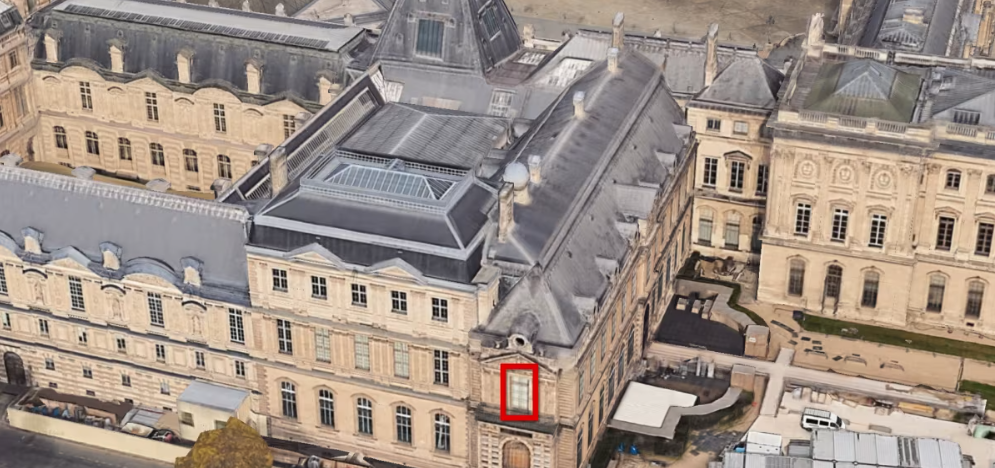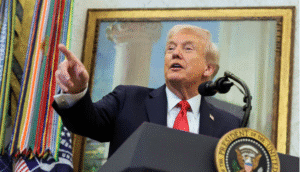Inside the Daring Louvre Heist That Shocked the World

Discover the full story behind the audacious daylight robbery at the Louvre Museum — how four expert thieves stole priceless Napoleonic-era jewels in just seven minutes, evading France’s top security forces.
The Heist That Captivated the World
It began like an ordinary morning in Paris — the kind tourists dream of. The Louvre Museum, home to some of the world’s most iconic art and treasures, opened its doors to visitors at 9:00 a.m. But within an hour, it would become the scene of what’s now being called the “heist of the century.”
On that quiet morning, four masked individuals carried out a meticulously planned robbery, stealing Napoleonic-era jewels of immeasurable historical value — artifacts once belonging to French royalty and considered part of the nation’s cultural soul.
The boldness of the act, the precision with which it was executed, and the priceless nature of the stolen items have left investigators — and the world — stunned.
A Heritage Under Attack
French President Emmanuel Macron addressed the nation shortly after news of the heist broke, describing it as “an attack on a heritage we cherish.” He vowed that every effort would be made to track down the perpetrators and recover what he called “the crown jewels of France.”
The theft was more than a simple crime — it was a direct strike at France’s national identity. The jewels represented not just wealth, but history itself: the craftsmanship of an era, the personal adornments of queens, and the symbols of an empire that once shaped Europe.
The Morning of the Heist: Paris, 9:30 a.m.
By 9:30 a.m., the museum had been open for just half an hour. On Quai François Mitterrand, in the heart of Paris, a passerby noticed unusual activity — two men on Yamaha T-Max scooters and a white utility truck parked nearby. The men in the truck were dressed as maintenance workers, wearing orange and yellow safety vests.
At first glance, it looked like routine maintenance work. But the witness sensed something wasn’t right and alerted the police.
Within minutes, the thieves sprang into action. They placed traffic cones around the truck to appear legitimate, deployed a hydraulic lift, and ascended toward a second-floor balcony. Using an angle grinder, a handheld tool capable of cutting through metal and glass, they sliced open a window leading into the Apollo Gallery — one of the most ornate and guarded rooms in the Louvre.
Inside that gallery rested France’s crown jewels — dazzling relics from the Napoleonic era, including sapphires, emeralds, and diamonds once worn by queens and empresses.
Breaking Into the Apollo Gallery
The Apollo Gallery has long been a symbol of French majesty. Its gilded walls and intricate ceilings reflect centuries of artistic and royal legacy. But on this morning, it became the stage of a crime as cinematic as it was shocking.
Once inside, the thieves moved with surgical precision. They smashed two glass display cases, ignoring paintings and smaller valuables. Their target was clear: nine pieces of royal jewelry.
Among them were tiaras, necklaces, and earrings adorned with rare gemstones — priceless heirlooms from the 19th century. Within minutes, the robbers stuffed the jewels into secure pouches and climbed back down the ladder to their waiting truck.
By the time police received the initial call and arrived at the scene, the robbers were gone. The entire operation had taken just seven minutes.
The Operation’s Timeline
12:00–12:30 p.m. — The Heist Confirmed
French Interior Minister Laurent Nuñez broke the news publicly on the national radio station France Inter, confirming that the Louvre had suffered a “targeted and professional robbery.”
“It’s clear that this team had studied the location thoroughly,” Nuñez stated. “They acted with remarkable precision — it was the work of an experienced, well-coordinated group.”
He added that the stolen pieces held immense sentimental and historical value beyond their market worth, describing them as “irreplaceable treasures of the Republic.”
12:50 p.m. — Investigators at the Scene
By midday, the Paris Police Prefecture had cordoned off the museum’s perimeter. Detectives and forensic experts examined the truck the thieves had left behind.
Video footage captured officers collecting evidence: the angle grinder, discarded gloves, and a blue jerry can — likely used to power or cool the cutting tools. The hydraulic lift was still extended toward the balcony, a haunting reminder of how easily the criminals had breached one of the most secure museums on Earth.
1:26 p.m. — Officials Call It “Professional Work”
Ariel Weil, the mayor of Paris Center, told reporters that the crime bore the hallmarks of a highly trained, professional team.
“This was a meticulous operation,” he said. “They knew the layout, they knew the timing, and they executed it flawlessly. We have not seen anything of this scale since the theft of the Mona Lisa in 1911.”
The comparison wasn’t lost on anyone. More than a century ago, the Mona Lisa vanished from the Louvre and remained missing for two years before it was recovered in Italy. This new heist had rekindled that dark chapter of the museum’s history.
6:40 p.m. — Guards Threatened, Not Armed Robbery
By early evening, Paris Prosecutor Laure Beccuau revealed new details. The four perpetrators, she said, were unarmed, but used the angle grinders as intimidation tools.
“They did not carry firearms, but they threatened security personnel with their equipment,” she explained to BFMTV. “The guards were forced to comply, ensuring no one was injured.”
Beccuau added that investigators were exploring multiple leads — including potential foreign involvement — though no conclusion had yet been drawn.
6:52 p.m. — The Stolen Jewels Revealed
Hours later, the French Ministry of Culture released the official list of stolen items. The haul included:
- A sapphire tiara worn by Queen Marie-Amélie
- A sapphire and diamond necklace owned by Queen Hortense
- An emerald necklace and earrings belonging to Empress Marie-Louise
- The famed “Reliquary Brooch”, adorned with diamonds and enamel
- A diamond corsage bow brooch of Empress Eugénie
Each piece was centuries old, crafted for royalty, and represented a tangible connection to the Napoleonic dynasty. The Ministry confirmed that the Brigade de Répression du Banditisme (BRB) — France’s elite anti-gang and organized crime unit — had taken charge of the investigation.
The Investigators’ Race Against Time
In Paris, specialized detectives known for handling high-profile art crimes are now in a race against time. The concern isn’t just finding the thieves — it’s preventing the jewels from being disassembled or smuggled out of Europe.
Once historical jewelry enters the black market, it’s often broken apart, gemstones reset, and gold melted to erase any trace of origin. Experts warn that within days, the pieces could vanish forever.
Interpol has been notified, and border alerts have been issued across the Schengen Zone.
A senior investigator, speaking anonymously, told reporters: “We are dealing with professionals. They knew exactly what they wanted and how to get it. These are not amateurs or opportunists — they are part of a sophisticated network.”
Lessons from the Mona Lisa Theft
The last time the Louvre suffered a theft of this magnitude was in August 1911, when Leonardo da Vinci’s Mona Lisa was stolen by a former museum worker, Vincenzo Peruggia. That case became a worldwide sensation and ultimately reshaped museum security standards.
Experts believe this latest heist could have similar consequences. Already, French officials are calling for a complete overhaul of museum security systems, particularly regarding emergency response times and surveillance blind spots.
“This theft challenges our assumptions about safety in cultural institutions,” said museum historian Dr. Elise Roux. “If it can happen at the Louvre, it can happen anywhere.”
A Meticulously Planned Operation
Security analysts believe the operation was planned over several months, possibly even a year. Surveillance footage revealed that the thieves visited the area multiple times in the weeks prior, likely studying guard routines and camera placements.
The use of maintenance uniforms and an official-looking truck allowed them to blend seamlessly into the city’s morning traffic — a classic tactic in professional heists.
The choice of timing was also deliberate: the Louvre opens early, but heavy visitor crowds arrive later in the morning, giving the thieves a small window of relative quiet.
The Value of What Was Stolen
While authorities have not placed an exact monetary value on the stolen jewels, experts estimate their worth could exceed €100 million ($108 million USD) — though their historical value is far greater.
“These are national treasures,” said art historian François Delorme. “They belonged to queens and empresses who shaped French history. Their value cannot be measured in currency — they are irreplaceable symbols of France’s past.”
Insurance companies are working closely with the museum, but officials acknowledge that no financial compensation can replace the cultural loss.
The Human Element: Guards and Witnesses
Security guards on duty at the time were reportedly overpowered but unharmed. They followed protocol by avoiding direct confrontation once the thieves threatened them with industrial tools.
Local witnesses described hearing grinding sounds and seeing sparks near the second-floor balcony, assuming it was part of renovation work. Only later did they realize what they had witnessed.
“I saw men in vests, so I thought it was maintenance,” said one passerby. “Then I heard the alarms, and people started shouting. It was surreal — like a scene from a movie.”
Global Repercussions and Reactions
The Louvre heist quickly made international headlines. Across Europe and the U.S., art institutions issued statements expressing solidarity and calling for tighter security measures in cultural heritage sites.
In Italy, officials at the Uffizi Gallery said they were reviewing emergency procedures. In the U.K., the British Museum announced a full audit of its display case protections.
Meanwhile, social media erupted with theories, speculation, and even admiration for the thieves’ precision. However, French authorities were quick to condemn any romanticization of the crime.
“This is not a movie. This is an attack on history,” said Interior Minister Nuñez in a follow-up statement.
Where the Investigation Stands
As of the latest updates, French police have identified four suspects believed to be involved in the robbery. Two of them were seen fleeing on scooters, while the others abandoned the truck at the scene.
Forensic teams are analyzing fingerprints, tool marks, and DNA traces from the vehicle. Surveillance cameras along Rue de Rivoli and nearby bridges are being reviewed for possible escape routes.
Authorities have also reached out to Europol and Interpol for assistance, believing the jewels may have already crossed borders.
What Happens Next for the Louvre
Following the heist, the Louvre temporarily closed the Apollo Gallery for a full security review. Museum officials confirmed that additional surveillance systems, motion sensors, and reinforced glass cases will be installed in all high-value exhibit areas.
The museum reopened to the public days later, but the absence of the Napoleonic jewels has left a visible void. Tour guides now pause where the displays once stood, explaining to visitors that they are witnessing a piece of living history — a modern echo of the Mona Lisa’s disappearance more than a century ago.
The Broader Impact on Art Security
Experts say this incident could reshape global museum security practices.
“Technology has advanced, but so have criminals,” said security consultant Jean-Paul Magnier, who has worked with major European museums. “Today’s thieves use drones, encrypted communications, and even AI to plan attacks. Museums must evolve faster than the threats.”
In response, several European institutions are now investing in AI-powered surveillance systems capable of detecting abnormal human behavior patterns in real time.
The Mystery Endures
As of now, the whereabouts of the stolen jewels remain unknown. Whether hidden in Paris or smuggled abroad, their trail has gone cold — at least for the moment.
For many in France, the heist is more than a crime story; it’s a national tragedy, echoing through the marble halls of the Louvre.
And like all great mysteries, it raises one haunting question — how could something so bold, so brazen, happen in broad daylight at the world’s most famous museum?
Internal Linking Suggestions:
- Link “Louvre Museum” to your World Heritage and Travel category.
- Link “French crown jewels” to a History and Culture section.
- Link “Mona Lisa theft” to your Art Crime Archives page.
- Link “Museum security systems” to your Technology in Art subtopic.






